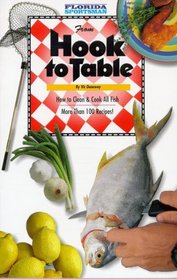Search -
From Hook to Table
From Hook to Table
Author:
Whether you catch all the fish that grace your table (or try to, anyway), or whether your fish dinners come from the local market, this book aims to make the handling, cleaning, cold-storing and cooking of your fish easier than it's ever been before. And the eating of them more delightful. Here you'll find a guide to the table qualities and sug... more »
Author:
Whether you catch all the fish that grace your table (or try to, anyway), or whether your fish dinners come from the local market, this book aims to make the handling, cleaning, cold-storing and cooking of your fish easier than it's ever been before. And the eating of them more delightful. Here you'll find a guide to the table qualities and sug... more »
ISBN-13: 9780936240152
ISBN-10: 0936240156
Publication Date: 4/1998
Rating: ?
ISBN-10: 0936240156
Publication Date: 4/1998
Rating: ?
0 stars, based on 0 rating
Publisher: Wickstrom Publishers
Book Type: Paperback
Other Versions: Hardcover
Reviews: Amazon | Write a Review
Book Type: Paperback
Other Versions: Hardcover
Reviews: Amazon | Write a Review
Genres:





